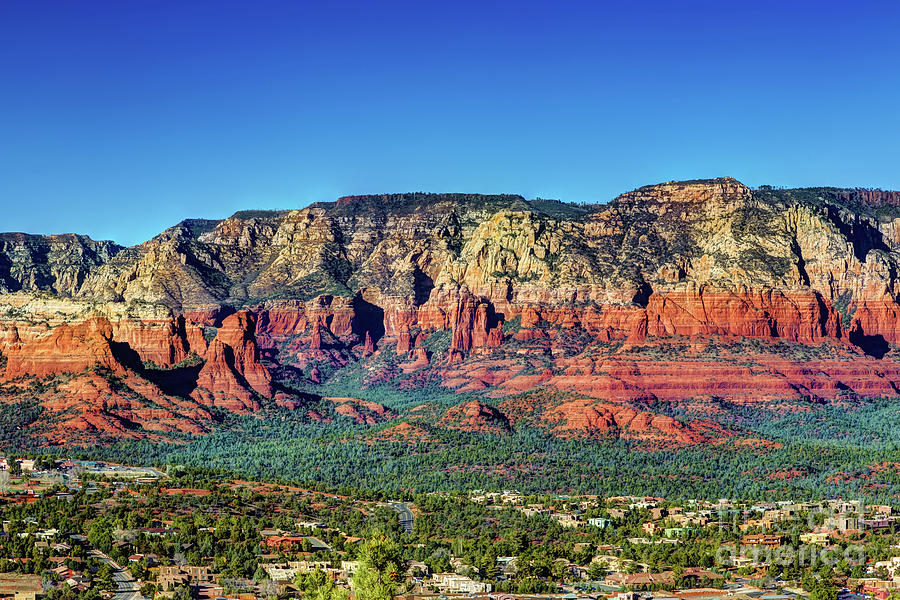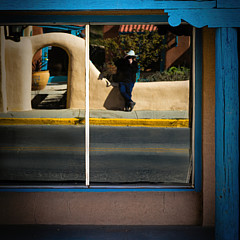
Arizona Rest Stop

by Jon Burch Photography
Title
Arizona Rest Stop
Artist
Jon Burch Photography
Medium
Photograph - Digital Capture And Enhancement
Description
This image is a view of the famous Red Rocks of Sedona from Airport Road in Arizona.
Defining the boundary between the Colorado Plateau to the north, the Basin and Range to the south and the base of the Mogollon Rim, Courthouse Butte, Bell Rock and the other red rocks form an escarpment that runs east-west through the middle of Arizona. The Mogollon Rim is about 200 miles long, and ranges between 2000 and 3000 feet in height. But in the Sedona region, erosion has gradually eaten away at the rim, moving it northward a distance of about four miles and leaving behind some of the most spectacular and picturesque canyons and buttes found anywhere in the world.
The deep red color for which Sedona is famous is due to the presence of hematite or iron oxide, staining the sandstone of Schnebly Hill and Hermit Shale layers. The steep terrain is due the top layers of the strata being composed of basalt and limestone, which are both harder than the underlying sandstone. Water running off the edge of the escarpment dissolves the lower layers, creating the steep cliffs. Eventually enough soft material is broken down and eroded, undercutting the cap layer, subsequently breaking it off in large slabs allowing it to fall into the canyons. This process exposes new softer material and the process repeats, with the cliff face about twenty feet further north than it was before.
The red rocks themselves were formed by a layer of rock known as the Schnebly Hill Formation. Schnebly Hill is a thick layer of red to orange-colored sandstone, and a member of the Supai Group, which was deposited during the Permian Period about 299 to 251 million years ago. Approximately 800 to 1000 feet thick, Schnebly Hill is the major component of Sedona's well known "Red Rocks" visible in the area.
The Schnebly Hill formation is comprised of the Sycamore Pass and Bell Rock members, which are separated by a ten to twelve foot thick layer of grey-colored limestone called the Fort Apache Member, formed during a major incursion of an ancient Sea. There are no fossils in the Schnebly Hill sandstones, and virtually none in the thin limestone layers. - Wikki
Digital effects were applied to the original image after the photograph was made. Copyright Jon Burch Photography
Uploaded
October 16th, 2012
Statistics
Viewed 320 Times - Last Visitor from Coventry, RI on 04/23/2024 at 7:11 AM
Embed
Share
Sales Sheet


























































